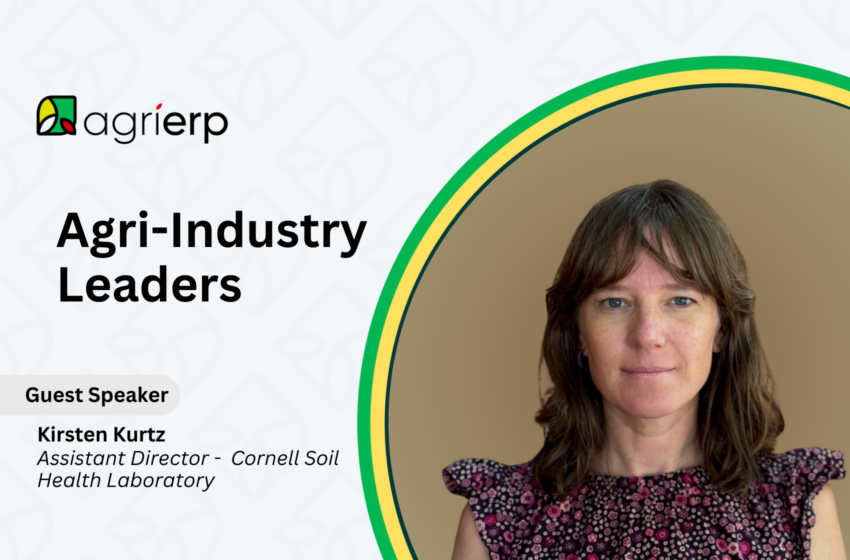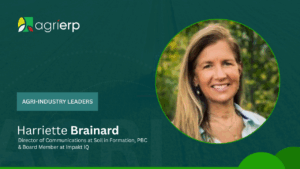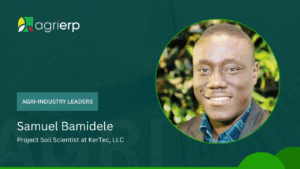Raised on a 200-acre organic farm and trained as a fine artist, Kirsten Kurtz brings a rare fusion of creativity and science to agriculture. Now the Assistant Director at the Cornell Soil Health Lab. The first commercial soil health testing facility. Kirsten is known globally not just for her research, but for her ability to translate soil science into something the world can see and feel.
From developing a method to paint with soil, to winning a UN award for her World Soil Day initiative, she’s redefining what it means to be a scientist in agriculture. We spoke with Kirsten to get her perspective on where the Ag industry is headed, what soil really needs, and how 2025 could be a turning point.
AgriERP: What’s your take on regenerative agriculture, soil health versus traditional farming?
Kirsten Kurtz: Sees regenerative agriculture practices as a valuable approach to improving soil health, though she emphasizes that it’s not a quick fix. Natural soil formation can take hundreds or even thousands of years, so realistic goals are essential. In her master’s research, she studied remnant prairies in Nebraska areas untouched by modern agriculture and found that their soil properties were often twice as healthy as nearby managed farmland. She believes that identifying such benchmarks is key to measuring progress in soil restoration initatives.
AgriERP: How do you differentiate soil restoration techniques from soil improvement?
Kirsten Kurtz: While full soil health restoration to pre-agricultural conditions is unlikely in our lifetimes, soil improvement through sustainable management is achievable. She advocates for soil restoration methods like adding organic matter, minimizing tillage, and keeping soil covered to enhance current soil health rather than trying to reverse centuries of change.
AgriERP: How important is 2025 for sustainability and soil monitoring?
Kirsten Kurtz: This is a crucial time. We’ve already lost a third of arable soil globally. In 2025 and beyond, we must focus on educating the public about soil’s role in food security. Scientific communication is key. We need policies, funding, and public awareness to support farmers and researchers alike.
Over 95% of our food is grown in the soil. If we don’t protect it, we risk everything. — Kirsten Kurtz
AgriERP: Precision Ag was a buzzword last year—how do you see its actual impact?
Kirsten Kurtz:Precision Ag is amazing, but it’s still surface-level in many cases. Probes often only measure carbon or pH. Soil health is about biological, chemical, and physical properties. like microbial activity and aggregate stability. Many tools claim to assess “soil health” but fall short of the holistic picture. There’s a lot of potential, but we’re not there yet.
AgriERP: AI and machine learning, where do they fit into all this?
Kirsten Kurtz:AI can be incredibly useful in identifying relationships in soil data and predictive modeling. But she is also concerned about environmental costs, especially freshwater use in AI infrastructure. If we’re not protecting soil and water, what’s the point of smart tech? AI should serve essential goals, not vanity projects.
AgriERP: What are your key research areas right now?
Kirsten Kurtz:Kirsten and her team are focused on developing soil health analysis methods that are sensitive to management practices, affordable, and fast. They are also working toward building regional and crop-specific benchmarks, allowing farmers to compare their soil data to relevant peer groups. like other corn-soybean farms in the Midwest or Christmas tree farms in New York.
AgriERP: If you could implement one global change for soil health what would it be?
Kirsten Kurtz:Keep soil covered. It sounds simple, but it’s huge. Bare soil is vulnerable to erosion and degradation. Cover cropping, mulching, and even roller crimpers. all help protect the soil. It’s probably the single most effective action we can take right now.
Final Takeaways:
Kirsten’s work is a powerful reminder that soil isn’t just dirt it’s the foundation of life. Whether through science, communication, or creativity, she’s reshaping how we think about agriculture and sustainability.
I consider myself a scientific communicator first. If we can’t explain our research to the public, how can we expect change? – Kirsten Kurtz
Her journey and perspective highlight the importance of collaboration, data-backed action, and public education in protecting the future of food and farming.
What’s Next?
We’d love to hear your thoughts on this inspiring conversation! Let us know in the comments.







